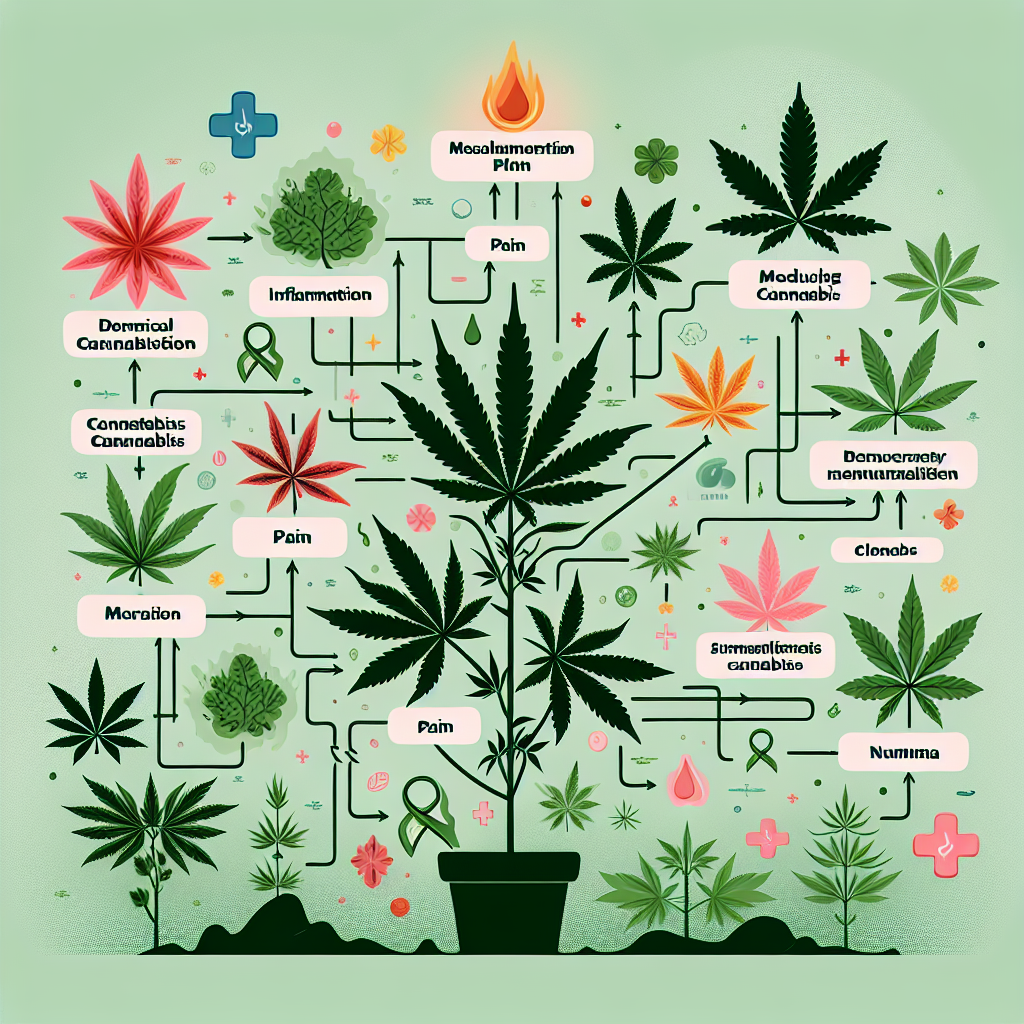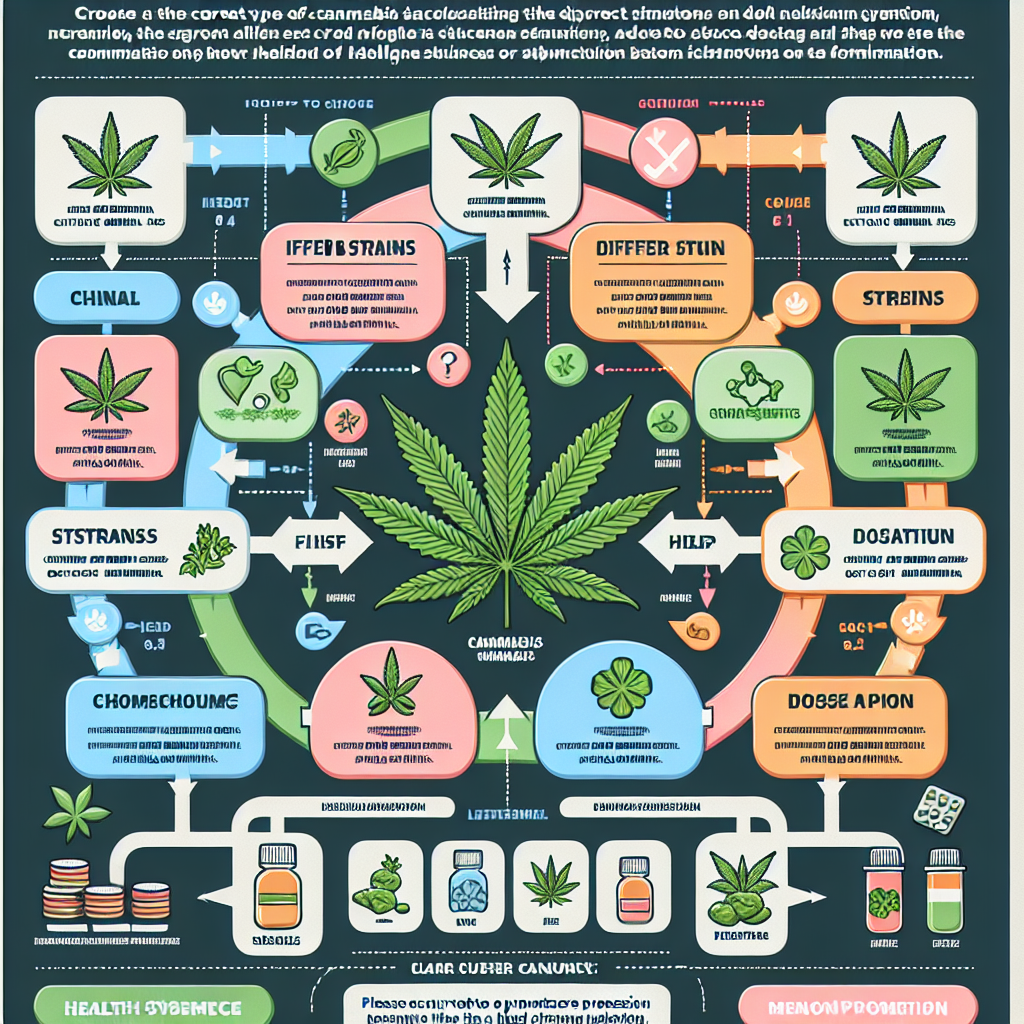Choosing the right medical cannabis for your symptoms involves understanding the different strains, cannabinoids, and delivery methods available. Medical cannabis can be tailored to address specific health issues, such as chronic pain, anxiety, insomnia, and more. By considering factors like the THC to CBD ratio, the method of consumption, and individual body chemistry, patients can find the most effective treatment for their needs. Consulting with a healthcare professional and starting with a low dose can also help in identifying the optimal cannabis product for symptom relief.
Understanding Different Strains: Indica vs. Sativa
When it comes to choosing the right medical cannabis for your symptoms, understanding the differences between Indica and Sativa strains is crucial. These two primary types of cannabis plants offer distinct effects and benefits, making them suitable for different medical conditions. By familiarizing yourself with their unique characteristics, you can make an informed decision that best addresses your specific needs.
Indica strains are often associated with a calming and sedative effect, making them ideal for evening use or when you need to relax. These strains are typically recommended for patients dealing with insomnia, chronic pain, or anxiety. The soothing properties of Indica can help ease muscle tension and promote restful sleep, which is particularly beneficial for those who struggle with sleep disorders. Additionally, Indica strains are known for their ability to stimulate appetite, making them a good choice for patients undergoing treatments that affect their desire to eat, such as chemotherapy.
On the other hand, Sativa strains are known for their uplifting and energizing effects. These strains are often recommended for daytime use, as they can help improve focus, creativity, and overall mood. Patients suffering from depression, fatigue, or attention deficit disorders may find Sativa strains particularly helpful. The invigorating properties of Sativa can provide a much-needed boost in energy and motivation, allowing patients to carry out their daily activities with greater ease.
While the general effects of Indica and Sativa strains are well-documented, it’s important to note that individual responses to cannabis can vary. Factors such as body chemistry, tolerance levels, and the specific cannabinoid and terpene profiles of a strain can influence how you experience its effects. Therefore, it may be necessary to experiment with different strains to find the one that works best for you.
In addition to the basic Indica and Sativa classifications, there are also hybrid strains that combine the characteristics of both. These hybrids can offer a balanced effect, providing the relaxation of Indica with the mental clarity of Sativa. Depending on the ratio of Indica to Sativa, hybrids can be tailored to address a wide range of symptoms. For example, a strain with a higher Indica content may be more suitable for pain relief and relaxation, while a strain with a higher Sativa content may be better for enhancing mood and focus.
When selecting a medical cannabis strain, it’s also important to consider the cannabinoid content, particularly the levels of THC and CBD. THC is the psychoactive compound responsible for the “high” associated with cannabis, while CBD is non-psychoactive and known for its therapeutic properties. Strains with higher CBD content are often preferred by patients seeking relief without the intoxicating effects of THC. Conversely, strains with higher THC levels may be more effective for severe pain or other conditions that require stronger intervention.
To make the best choice, consulting with a knowledgeable healthcare provider or a cannabis specialist can be invaluable. They can help guide you through the process, taking into account your medical history, current symptoms, and personal preferences. Additionally, many dispensaries offer detailed information about their products, including lab results that indicate the cannabinoid and terpene profiles of each strain.
In conclusion, understanding the differences between Indica and Sativa strains, as well as considering hybrid options and cannabinoid content, can significantly enhance your ability to choose the right medical cannabis for your symptoms. By taking the time to explore and experiment, you can find a strain that provides the relief you need while fitting seamlessly into your lifestyle.
Matching Symptoms to Cannabinoid Profiles

Choosing the right medical cannabis can be a daunting task, especially with the myriad of options available. However, understanding how to match your symptoms to specific cannabinoid profiles can make this process much more manageable. Cannabinoids are the active compounds in cannabis, with the most well-known being THC (tetrahydrocannabinol) and CBD (cannabidiol). Each cannabinoid interacts with the body’s endocannabinoid system differently, producing various effects that can be beneficial for different symptoms.
To begin with, it’s essential to identify your primary symptoms. For instance, if you are dealing with chronic pain, THC-dominant strains might be more effective. THC is known for its analgesic properties, which can help alleviate pain. Additionally, THC can also induce a sense of euphoria, which might be beneficial for those suffering from pain-related depression or anxiety. On the other hand, if you are looking for relief from inflammation, CBD-dominant strains could be more suitable. CBD has potent anti-inflammatory properties without the psychoactive effects of THC, making it a popular choice for those who need to remain clear-headed while managing their symptoms.
Moreover, some conditions might benefit from a balanced ratio of THC and CBD. For example, patients with multiple sclerosis or epilepsy often find that a 1:1 ratio of THC to CBD provides the best symptom relief. This balance allows them to benefit from the therapeutic effects of both cannabinoids while minimizing potential side effects. Transitioning to another common symptom, insomnia, THC-dominant strains are generally more effective. THC can help induce sleep, making it easier for those with sleep disorders to fall and stay asleep. However, it’s worth noting that high doses of THC can sometimes lead to grogginess the next day, so starting with a lower dose and gradually increasing it might be a good strategy.
In contrast, anxiety and stress are often better managed with CBD-dominant strains. CBD has been shown to have anxiolytic properties, which can help reduce feelings of anxiety and promote a sense of calm. Unlike THC, CBD does not produce a high, making it a safer option for those who need to manage anxiety throughout the day. Furthermore, some people find that a combination of CBD and low doses of THC can be particularly effective for anxiety, as the CBD can help mitigate any potential anxiety-inducing effects of THC.
Transitioning to gastrointestinal issues, such as nausea or lack of appetite, THC-dominant strains are typically more effective. THC has been shown to stimulate appetite and reduce nausea, making it a common choice for patients undergoing chemotherapy or those with eating disorders. However, for those who cannot tolerate the psychoactive effects of THC, CBD can also offer some relief from nausea, though it may not be as effective in stimulating appetite.
Lastly, it’s important to consider the method of consumption. Inhalation methods, such as smoking or vaping, provide rapid relief, which can be beneficial for acute symptoms like sudden pain or nausea. However, for chronic conditions, edibles or tinctures might be more suitable as they offer longer-lasting effects. Additionally, topicals can be an excellent option for localized pain or inflammation, as they allow you to target specific areas without the systemic effects of other consumption methods.
In conclusion, matching your symptoms to the appropriate cannabinoid profile involves understanding the unique properties of THC and CBD and how they interact with your body. By carefully considering your symptoms and experimenting with different ratios and consumption methods, you can find the most effective medical cannabis treatment for your needs.
The Role of Terpenes in Symptom Relief
When it comes to choosing the right medical cannabis for your symptoms, understanding the role of terpenes can be incredibly beneficial. Terpenes are aromatic compounds found in many plants, including cannabis, and they play a significant role in the plant’s therapeutic effects. These compounds not only contribute to the distinct aroma and flavor of different cannabis strains but also interact synergistically with cannabinoids like THC and CBD to enhance their medicinal properties. This interaction is often referred to as the “entourage effect,” where the combined effect of cannabinoids and terpenes is greater than the sum of their individual effects.
For instance, if you’re dealing with anxiety, you might want to look for strains high in the terpene linalool. Linalool is also found in lavender and is known for its calming and anti-anxiety properties. By choosing a strain rich in linalool, you may find that it helps to alleviate your anxiety more effectively than a strain without this terpene. Similarly, if you’re seeking relief from chronic pain, strains high in the terpene myrcene could be beneficial. Myrcene is known for its sedative and muscle-relaxing effects, making it a good choice for those who need help managing pain and getting a good night’s sleep.
Transitioning to another common symptom, inflammation is another area where terpenes can make a significant difference. Beta-caryophyllene, a terpene found in black pepper and cloves, has strong anti-inflammatory properties. Strains high in beta-caryophyllene can be particularly effective for conditions like arthritis or inflammatory bowel disease. This terpene not only helps reduce inflammation but also has the unique ability to bind directly to cannabinoid receptors in the body, enhancing its therapeutic effects.
Moreover, if you’re struggling with depression, the terpene limonene might be what you need. Limonene is commonly found in citrus fruits and is known for its mood-enhancing and anti-depressant properties. Strains high in limonene can help elevate your mood and provide a sense of well-being, making it easier to cope with the challenges of depression. Additionally, limonene has been shown to have anti-anxiety effects, which can be particularly helpful if your depression is accompanied by anxiety.
For those dealing with nausea or lack of appetite, the terpene pinene could offer some relief. Pinene, as the name suggests, is found in pine needles and has anti-nausea and appetite-stimulating properties. Strains high in pinene can help settle your stomach and make it easier to eat, which is especially important for patients undergoing treatments like chemotherapy.
In conclusion, understanding the role of terpenes in symptom relief can greatly enhance your medical cannabis experience. By selecting strains based on their terpene profiles, you can tailor your treatment to better address your specific symptoms. Whether you’re dealing with anxiety, chronic pain, inflammation, depression, or nausea, there’s likely a terpene that can help. So, the next time you’re at a dispensary, don’t just focus on the THC and CBD content; take a moment to consider the terpenes as well. This holistic approach can make all the difference in finding the most effective relief for your symptoms.
Dosage and Consumption Methods for Optimal Results
When it comes to choosing the right medical cannabis for your symptoms, understanding the appropriate dosage and consumption methods is crucial for achieving optimal results. The journey to finding the perfect balance can be a bit daunting, but with some guidance, you can navigate this path with confidence.
First and foremost, it is essential to recognize that the ideal dosage of medical cannabis varies significantly from person to person. Factors such as body weight, metabolism, the severity of symptoms, and previous cannabis experience all play a role in determining the right amount. Starting with a low dose and gradually increasing it is a prudent approach. This method, often referred to as “start low and go slow,” allows you to monitor how your body responds to the cannabis and adjust accordingly. For instance, if you are using cannabis to manage chronic pain, you might begin with a small dose and slowly increase it until you find the relief you need without experiencing adverse effects.
Equally important is the method of consumption, as it can significantly influence the onset, intensity, and duration of the effects. Smoking and vaping are popular methods due to their rapid onset, typically within minutes. This can be particularly beneficial for acute symptoms such as sudden pain or anxiety attacks. However, these methods may not be suitable for everyone, especially those with respiratory issues.
Alternatively, edibles offer a different experience. When cannabis is ingested, it passes through the digestive system and is metabolized by the liver, resulting in a delayed onset of effects, usually between 30 minutes to 2 hours. The effects of edibles tend to last longer, making them a good option for sustained symptom relief. However, it is crucial to be cautious with dosing, as it is easy to consume too much before the effects are felt. Starting with a low dose, such as 2.5 to 5 milligrams of THC, and waiting at least two hours before considering an additional dose is advisable.
Tinctures and oils provide another versatile option. These can be taken sublingually (under the tongue) for relatively quick absorption, usually within 15 to 45 minutes. This method allows for precise dosing and can be a discreet way to consume cannabis. Tinctures can also be added to food or beverages, offering flexibility in how you incorporate them into your routine.
Topical applications, such as creams and balms, are ideal for localized relief. These products are applied directly to the skin and can be effective for conditions like arthritis or muscle soreness. Since topicals do not enter the bloodstream, they do not produce psychoactive effects, making them a suitable option for those who wish to avoid the “high” associated with THC.
In addition to these methods, capsules and transdermal patches are available, each offering unique benefits. Capsules provide a familiar and straightforward way to consume cannabis, with effects similar to edibles. Transdermal patches, on the other hand, deliver cannabinoids through the skin and into the bloodstream, offering a steady release over several hours.
Ultimately, finding the right dosage and consumption method for your medical cannabis requires some experimentation and patience. Consulting with a healthcare professional who is knowledgeable about cannabis can provide valuable insights tailored to your specific needs. By taking a thoughtful and informed approach, you can optimize your medical cannabis experience and effectively manage your symptoms.
Q&A
1. **Question:** What factors should be considered when choosing medical cannabis for chronic pain?
**Answer:** Consider the THC to CBD ratio, strain type (indica for body relaxation, sativa for energy), and method of consumption (edibles, tinctures, vaping).
2. **Question:** How can medical cannabis help with anxiety symptoms?
**Answer:** Opt for strains high in CBD and low in THC to avoid psychoactive effects, and consider methods like tinctures or capsules for controlled dosing.
3. **Question:** What type of medical cannabis is recommended for insomnia?
**Answer:** Indica strains with higher THC content are typically recommended for their sedative effects, and consumption methods like edibles or tinctures taken before bedtime.
4. **Question:** Which medical cannabis products are suitable for managing nausea and appetite loss?
**Answer:** Strains with a balanced THC to CBD ratio, such as hybrid strains, and methods like vaping or tinctures for quick relief.
Conclusion
To choose the right medical cannabis based on your symptoms, consider the following steps: consult with a healthcare professional to understand your specific medical condition and symptoms; research different cannabis strains and their cannabinoid profiles, focusing on THC and CBD ratios; consider the method of consumption (e.g., smoking, edibles, tinctures) for its onset time and duration of effects; start with a low dose and gradually increase to find the optimal therapeutic effect; and monitor your response to adjust the strain, dosage, or consumption method as needed. Always prioritize products from reputable sources to ensure quality and safety.


